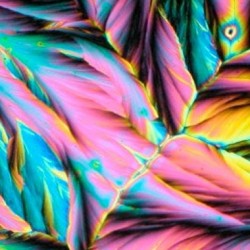By Helen Figueira
April 18, 2012
Time to read: 3 minutes
 New therapeutic approaches for treatment of schizophrenia
New therapeutic approaches for treatment of schizophrenia
Few of us can imagine how frightening it is to lose control of our thoughts and feelings, as is the case for half a million people in the UK that suffer from schizophrenia. Antipsychotic medication has helped many by curtailing distressing hallucinations and delusions. However adverse side effects are common and wide-ranging. New research suggests that the drugs currently in use may be failing to target the key problem in the brain.
“Our current treatments all use the same method that was first discovered over fifty years ago, but are not effective for millions of patients,” explains CSC’s Oliver Howes (Psychiatric Imaging), the study’s lead author. “We desperately need better treatments.” A meta-analysis published in Archives of General Psychiatry uncovers a major chemical abnormality in the brains of patients with schizophrenia. Dopamine – a chemical messenger in the brain – has long been known to be involved, but scientists are only just beginning to understand its exact role.
Many conventional drugs aim to dull the activity of a family of dopamine receptors, called D2 receptors. They work on the hypothesis that overactivation of these receptors leads to excessive dopamine activity. New research, however, indicates that this might be tackling the problem at too late a stage. Receptors are ‘postsynaptic’. This means that therapies targeting them interrupt the dopamine pathway after the dopamine has already been produced and released. The new research suggests that future treatments should target the presynaptic control of dopamine – that is, it’s synthesis and release.
The research, based on brain scans of over 600 patients with schizophrenia, has found that in schizophrenic patients the major dopamine problem is one of overproduction. This excess of dopamine plays a vital, destructive role in the development of psychosis. The implications for the treatment of schizophrenia, the most common severe mental illness, are huge.
“Our finding highlights a new way of treating the condition, by reducing dopamine levels in the brain,” says Howes. There are already drugs in existence that might be able to do this. Data support the belief that substances called reserpine and α-methylparatyrosine both have the capacity to deplete the store of presynaptic dopamine.
This revelation of a new potential target for therapy could lead to a major change in the approach to treating schizophrenia. Current treatments may not only be failing to target the major dopaminergic abnormality, but worsening the situation by causing an increase in dopamine receptors. Existing treatments are in Oliver’s words, “the result of empiricism and serendipity, rather than rational drug design based on pathophysiology.” As we better understand how the complex neurobiology of schizophrenia develops, our approach to dealing with the illness will improve. There is no ‘cure’ for schizophrenia. But with rapidly advancing technologies and expanding understanding, the future is hopeful.
-AL
Howes, O. D. et al. (2012). The Nature of Dopamine Dysfunction in Schizophrenia and What This Means for Treatment: Meta-analysis of Imaging Studies. Arch Gen Psychiatry Abstract
Image credit: Dopamine crystals viewed with polarized light. Originally published under Creative Commons; CC-BY-NC-ND-2.0; courtesy of Wellcome Images, Spike Walker